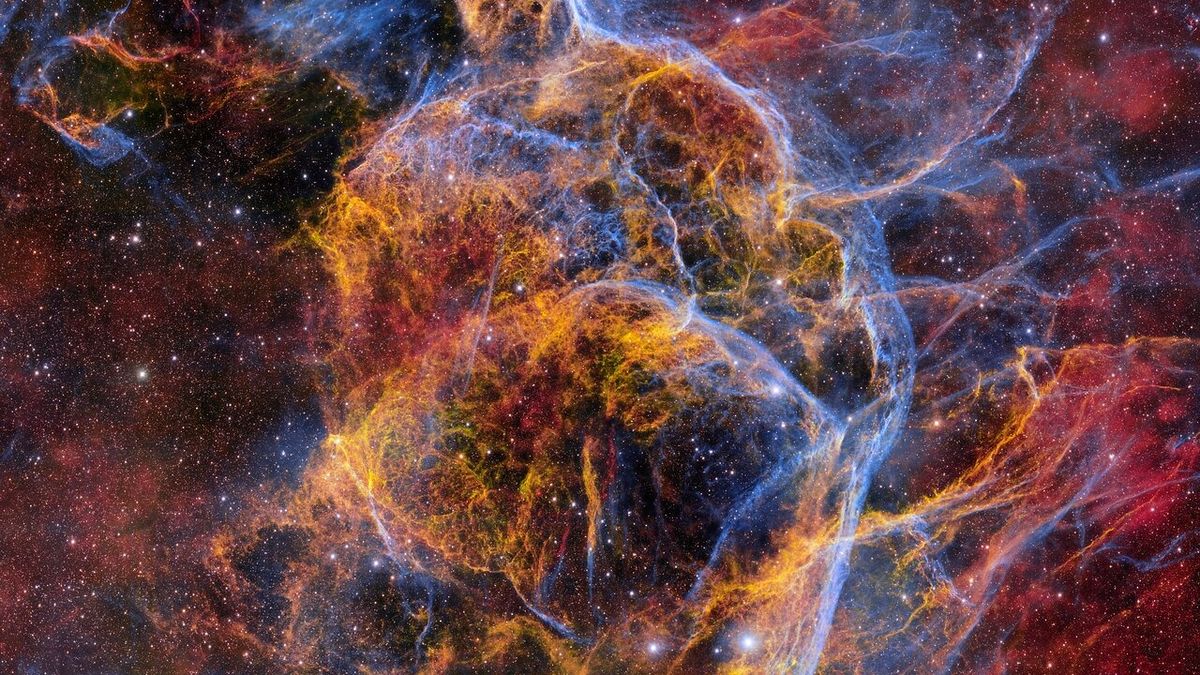The Vela Supernova Remnant: An Intricate Tapestry of Cosmic Destruction
The Vela supernova remnant, a billowing mass of dust filaments and gas tendrils stretching across 100 light-years of space like delicate lace, is a truly awe-inspiring sight. These scattered ashes of a star that exploded about 11,000 years ago offer a glimpse into the violent death throes of a massive star. This incredible image was acquired by the Dark Energy Camera (DECam), mounted on the Victor M. Blanco 4-Meter Telescope at the Cerro Tololo Inter-American Observatory in Chile.
Originally designed for a survey of distant galaxies to measure dark energy’s influence on the universe’s expansion, DECam has proven to be a versatile instrument. This image of the Vela supernova remnant, the largest ever released by the camera at 1.3 gigapixels, showcases the remarkable capabilities of DECam as one of the most powerful wide-field instruments ever built.
The Significance of the Vela Supernova Remnant
Lying some 800 light-years away, the Vela supernova remnant is a nebula formed from the remnants of a massive star’s explosive demise over eleven millennia ago. To capture the intricate detail of this 100 light-year-wide celestial spectacle, the image had to be expansive. Despite the nebula’s distance, it spans an area on the celestial sphere 20 times larger than the angular diameter of the full moon.
This remnant holds critical astronomical value, offering insights into the process of remnant formation after a supernova explosion and the subsequent interaction with the interstellar medium. The shockwave from the stellar explosion continues to expand, colliding with the interstellar medium and creating the delicate filaments seen in the image. Absorption lines from various elements detected in the supernova debris provide further clues about the process of element creation and dispersion.
The Pulsar and Constellation Connection
A supernova leaves behind a compacted core known as a neutron star, resulting in the creation of a pulsar. The Vela pulsar, located at the heart of the supernova remnant, spins at a remarkable rate of 11 rotations per second, emitting radio beams akin to a cosmic lighthouse. This pulsar also generates a pulsar wind nebula within the remnant, composed of charged particles impacting surrounding material.
The Vela supernova remnant resides in the constellation Vela, once part of the larger Argo Navis constellation in Greek mythology. French astronomer Nicolas Louis de Lacaille divided this immense constellation into Vela, Carina, and Puppis in 1755. This historical context adds an intriguing layer to the significance of the Vela supernova remnant within the constellation’s evolution.
In conclusion, the Vela supernova remnant represents a captivating blend of stellar destruction, remnant formation, and cosmic evolution. This intricate tapestry of cosmic events captured by DECam highlights the beauty and significance of astronomical phenomena within our ever-expanding universe.
Image/Photo credit: source url





